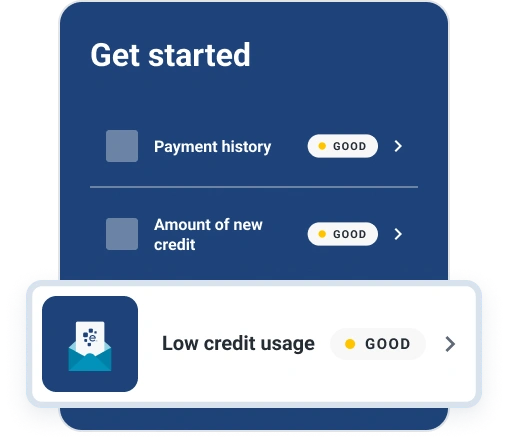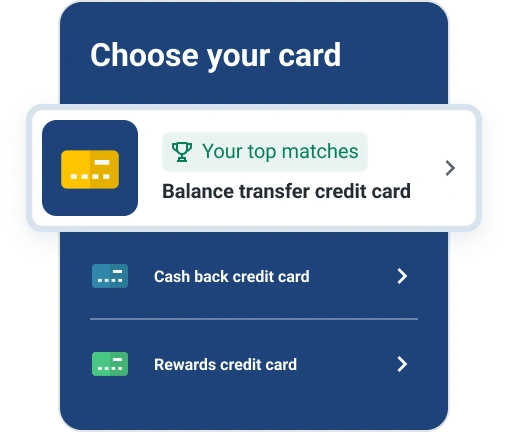At Experian, one of our priorities is consumer credit and finance education. This post may contain links and references to one or more of our partners, but we provide an objective view to help you make the best decisions. For more information, see our Editorial Policy.
In this article:
Navigating the world of credit cards can get tricky if you don't understand exactly how they work. Credit cards terms and conditions are often filled with confusing jargon that can be hard to decipher, even for seasoned cardholders.
If you miss even one small detail in your cardmember agreement, you could pay the cost in terms of late fees, interest or other charges. That's why we've put together a list of common credit card terms you should know as a credit card holder. Keep reading to learn more.
Annual Fee
A credit card annual fee is what an issuer charges you each year to use a particular credit card. Not all credit cards carry an annual fee. The ones that do will typically charge the annual fee directly to your card every year on the anniversary of your account opening.
Annual Percentage Rate (APR)
Annual percentage rate (APR) is the yearly rate of interest that you must pay on borrowed money, such as a loan. In the world of credit cards, the APR is a credit card's annual interest rate on your outstanding balance.
To find a card's monthly interest rate, divide by 12. If your credit card's APR is 14.99%, the monthly interest rate is 1.25%. Credit card interest accrues daily, however, so you might want to go one step further and divide your APR by 365 to find that your daily interest rate on the same card would be 0.04%
Credit card issuers charge different APRs for different types of transactions, including balance transfers, cash advances and purchases. However, the law requires that credit card issuers clearly define the various APR terms in the cardmember agreement. For cards that have a variable APR, the cardholder will provide the range of rates that applies.
Balance Transfer
A balance transfer is when you move debt from one account to another. Balance transfers credit cards are made available with this use in mind, and often come with a low or 0% introductory APR that can help you to pay off debt interest-free for a limited time. However, you should be mindful of the balance transfer fee and what the regular APR will be once the intro APR period ends.
Save with an intro 0% APR balance transfer
Balance Transfer Fee
The balance transfer fee is the amount a credit card issuer charges when you transfer your debt from one account to another. Fees are generally 3% to 5% of the amount transferred, with a $5 or $10 minimum. The credit card issuer receiving the balance is the one that charges a balance transfer fee.
Billing Cycle
A billing cycle is the time between statement closing dates. Once your billing cycle closes, your card issuer will calculate your statement balance based on any balance from previous billing cycles along with new transactions from the most recent billing cycle.
Cash Advance
A cash advance is a cash withdrawal from your credit card account. Cash advances typically have limits that are lower than your overall credit card limit and come with a higher APR than purchase transactions. And unlike purchases, cash advances do not have a grace period; they begin accruing interest as soon as you take the advance.
Credit Limit
A credit limit is the maximum amount of money you're allowed to spend on a credit card. Some factors credit card issuers use to determine your credit limit are your credit profile, including your payment history and credit utilization, along with your annual gross income.
Credit Utilization Rate
Also known as your credit utilization ratio, this is a percentage that reflects your current credit card balance relative to how much credit you have available to you. For example, if you have a credit card balance of $200 on a card with a $1,000 limit, your credit utilization ratio is 20%. Credit scoring companies consider your utilization on single credit card accounts as well as across all of your credit card accounts when calculating your scores, and the lower the ratio, the better. The amounts you owe on your accounts, including your credit utilization, makes up 30% of your credit score, so keeping credit card balances low can help your score.
Grace Period
This is the period between the end of a billing cycle and when your payment is due. Although credit card companies are not legally required to offer a grace period, most do. Grace periods vary, but must be a minimum of 21 days from the date your bill is mailed or delivered. The grace period generally only applies to new purchases, not balance transfers or cash advances.
Introductory APR
Many credit card issuers offer cardholders an introductory 0% APR that may last anywhere from six to 21 months from opening the card. During this time, you won't incur interest charges on purchases, balance transfers or both. Once the intro APR term is over, your regular APR kicks in, and the issuer will charge interest on any balance you don't pay in full within the billing cycle.
Late Payment Fee
As the term suggests, a late payment fee refers to the charge you pay when you fail to make on-time credit card payments. Your late fee can be no larger than the minimum payment due.
Late fees aren't the only reason to avoid late payments on your credit card, however. If you miss your payment due date by more than 30 days, your credit card issuer may report this information to the credit bureaus. Late payments can stay on your credit report—and hurt your credit score—for up to seven years.
Minimum Payment
Your credit card minimum payment is the minimum dollar amount that must be paid on your account each month. Your issuer may calculate your minimum payment as a flat percentage of your entire balance or a percentage plus the cost of interest and fees. How the minimum payment is calculated will depend on your card issuer and your credit card agreement.
Penalty APR
When you make a late payment, your issuer may penalize you with an interest rate that's higher than your regular APR. Once your credit card issuer applies a penalty APR to your card, it may stay in place indefinitely, making it more expensive to carry a balance on the card. However, issuers are required to review your account at least once every six months to see if your regular APR can be reinstated.
Statement Balance
Your credit card statement balance is the amount you owe on your account at the end of a billing cycle. It's the total of all the purchases, fees, interest and unpaid balances less any payments or credits since your previous statement. Your current balance, which is usually what you'll see when you check your account balance online, is a real-time view of your account balance and will include any current charges on your account that occurred after your statement closing date.
The Bottom Line
Understanding what each of these terms means can help you avoid common fees and keep your credit in good shape. As you expand your knowledge, you'll be able to get the best use of your card at the lowest cost possible. Becoming familiar with the terms here is a good start.
If you want to stay on top of and improve your credit profile even more, consider signing up for free access to your Experian credit report, which comes with credit monitoring and alerts.




